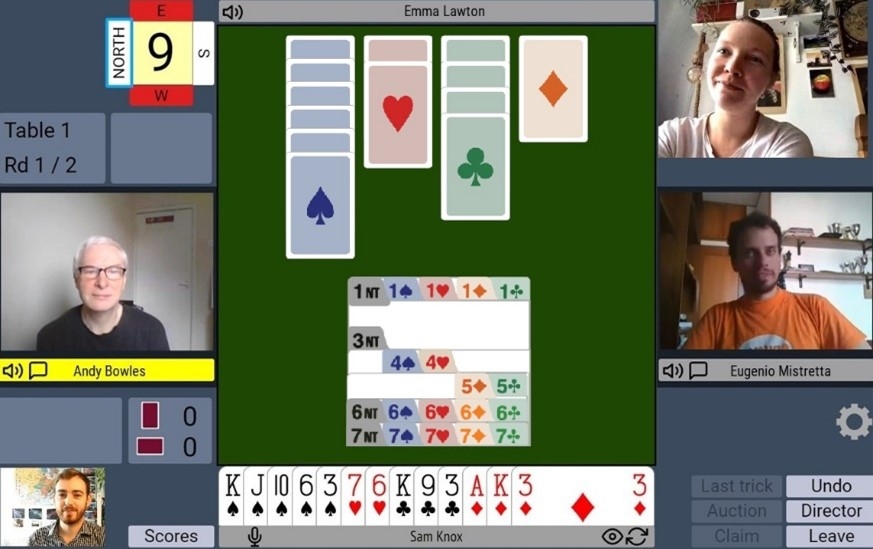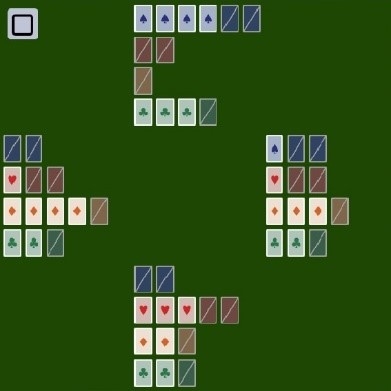MiniBridge on RealBridge
MiniBridge is used by many teachers around the world as a way to introduce newcomers to bridge, and to facilitate faster learning.
As part of our ongoing program of enhancements to support Bridge teachers, in September 2021 we released MiniBridge on RealBridge, where learners can play MiniBridge with other learners at a table with integrated audio and video.
What is MiniBridge?
You may already know how MiniBridge works, but if not, see the EBED material.
https://ebedcio.org.uk/
There are also lesson plans and prepared deals (PBN files).
In summary: the players announce how many points they have, then the side with more points becomes the declaring side. The player from the declaring side who has more points is declarer. Dummy is displayed. Declarer chooses a strain, and whether to play partscore or game. A lead is made, then play proceeds as normal.
MiniBridge on RealBridge
Before we implemented MiniBridge, naturally we talked to some of our customers first, both in the UK and internationally. There are teaching programs in most countries.
It turned out that there isn’t just one MiniBridge. Here are some of the variations we know about:
• As well as partscore or game, you can also play in slam (and in some countries grand slam).
• Minor-suit games don’t exist – only majors and notrumps.
• To make partscore in a suit, you need eight tricks, not just seven.
• The defenders can double the contract, after discussing whether they think it will make.
• When choosing the contract, declarer can’t see dummy. Instead, they just know dummy’s shape.
• The opening lead is made without seeing dummy, or even without seeing dummy’s shape.
How it works
I’ll start by describing our default variant of MiniBridge, which is slightly different from the standard EBU version. See below for how to make it exactly the same as the EBU version, or your own preferred version.
With RealBridge, you’re all in the same virtual room, with audio and video of all the other players, and the teacher. This lends itself to playing MiniBridge like you would in a classroom, with spoken communication as much as possible.
Starting with dealer, in rotation the players say out loud how many points they have. They agree which side has the most points, and which player is declarer.
When everyone is happy, the declarer clicks the “I Am Declarer” button. If they click it by mistake, they can undo.
Declarer sees a cut-down bidding box, with just one-level partscores, game contracts, and slam contracts. Declarer sees dummy’s shape, like this:
(See below for how to have dummy's full hand shown instead.)
Using this information, declarer chooses a contract.
Next, the opening leader can choose whether to double or not. The two defenders can discuss this (without saying what their hands are). When they’ve decided, leader clicks either Pass or Double.
Now the opening leader sees the dummy, before choosing a lead. Play continues as normal, just like in a standard game of bridge on RealBridge.
Distribution View
Two of the hardest, but also most important, things for beginners to do are keeping track of the cards that have been played, and understanding how the suits are distributed. To make it easier to learn these skills, we have included an optional feature, the Distribution View, where any player can see the distribution of all the hands, and how many cards have been played in each suit.
Setting it up
In RealBridge’s implementation of MiniBridge, you set up the game like a normal bridge session, except that you tick a box for MiniBridge. Then you are presented with a range of options, which let you set up the game exactly how you want it. You can specify:
• The set of contracts that are allowed. This gives you the flexibility to start simple and work up towards the full set of bridge contracts. For example, with a very new set of players you might just specify one of a suit and 1NT. Then as the players progress you might add the game contracts, then the slams, and perhaps eventually the full set of bridge contracts.
• Whether doubles are allowed. Doubles are fun, especially for younger players, but you might not want to introduce those straight away.
• Whether to include the Distribution View.
• Whether declarer sees dummy before choosing the contract, or just sees dummy’s shape.
• Some entertaining visual options, like showering the table in fireworks when you make or defeat a contract.
What next?
This is the first stage of our MiniBridge implementation. We will add more features, especially in response to user feedback.
We are also in discussion with various national bridge organizations about international MiniBridge events for juniors. International MiniBridge clubs will also help young players develop their language and communications skills.
If you would like a demonstration of MiniBridge on RealBridge, please contact us at support@realbridge.online
To find out more, see these links: